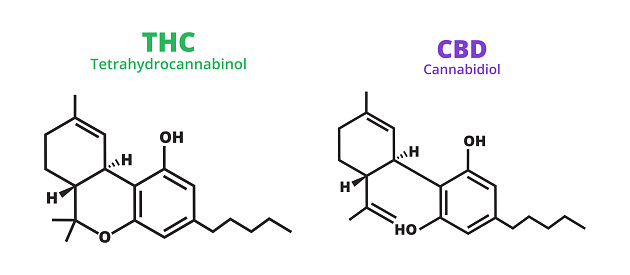THC and CBD are two of the most well-known compounds found in the cannabis plant, and they are often used for medicinal and recreational purposes. THC, or tetrahydrocannabinol, is the primary psychoactive component of cannabis, while CBD, or cannabidiol, is a non-psychoactive compound that has a wide range of potential therapeutic uses. In this article, we will explore the differences between THC and CBD and the potential benefits and risks of using these compounds.
THC and CBD are both cannabinoids, which are compounds that interact with the body’s endocannabinoid system (ECS). The ECS plays an important role in regulating a wide range of physiological processes, including pain, inflammation, mood, and appetite. THC and CBD interact with the ECS in different ways, producing different effects on the body.
THC is known for its psychoactive effects, which can include altered perception, euphoria, and relaxation. These effects are produced by THC’s interaction with the CB1 receptor in the brain. THC binds to the CB1 receptor and activates it, leading to the release of dopamine and other neurotransmitters that produce a sense of euphoria and pleasure. THC also interacts with other receptors in the brain and body, producing a wide range of effects on mood, appetite, and cognitive function.
CBD, on the other hand, does not produce the same psychoactive effects as THC. While CBD does interact with the CB1 receptor, it does not bind to it in the same way as THC. Instead, CBD interacts with other receptors in the body, including the CB2 receptor, which is involved in regulating inflammation and pain. CBD also interacts with other receptors and neurotransmitters in the body, producing a wide range of potential therapeutic effects.
One of the most well-known potential therapeutic uses of CBD is for the treatment of epilepsy. Several clinical trials have shown that CBD can be effective in reducing the frequency and severity of seizures in patients with certain types of epilepsy. CBD may also have potential uses in the treatment of anxiety, depression, chronic pain, and other conditions, although more research is needed to fully understand these effects.
THC also has potential therapeutic uses, particularly for the treatment of pain, nausea, and other symptoms associated with cancer and HIV/AIDS. However, the psychoactive effects of THC can be a drawback for some patients, and there is some concern about the potential for addiction and other negative side effects associated with THC use.
In addition to its potential therapeutic uses, THC is also used recreationally for its psychoactive effects. However, the use of THC for recreational purposes can have negative consequences, including impaired cognitive function, increased risk of accidents and injuries, and potential addiction.
Overall, the differences between THC and CBD reflect their different interactions with the ECS and their different effects on the body. While both compounds have potential therapeutic uses, it is important to understand the potential risks and benefits associated with their use and to use them responsibly. With continued research into the endocannabinoid system and the potential therapeutic uses of cannabinoids, we may see new and exciting developments in the treatment of a wide range of conditions in the years to come.
One of the challenges of using THC and CBD for medicinal purposes is the lack of regulation and standardization in the cannabis industry. Because cannabis is illegal at the federal level in many countries, including the United States, there is limited research on the safety and efficacy of different strains and products. This can make it difficult for patients to find reliable sources of THC and CBD and to determine the appropriate dosage and method of administration for their specific condition.
Another challenge is the potential for drug interactions and negative side effects. While THC and CBD are generally considered safe, they can interact with other medications and supplements, leading to potentially harmful side effects. In addition, long-term use of THC can lead to the development of tolerance and addiction, which can have negative consequences for users.
Despite these challenges, research into the therapeutic uses of THC and CBD is ongoing, and new information is being discovered all the time. In recent years, the legalization of cannabis for medicinal purposes in some countries has led to greater research into the safety and efficacy of different strains and products. This research has also led to the development of new treatments, such as Epidiolex, which is a CBD-based medication used to treat certain types of epilepsy.
Overall, the differences between THC and CBD reflect their different interactions with the endocannabinoid system and their different effects on the body. While both compounds have potential therapeutic uses, it is important to understand the potential risks and benefits associated with their use and to use them responsibly. With continued research and development, we may see new and exciting developments in the treatment of a wide range of conditions using THC and CBD in the years to come.



